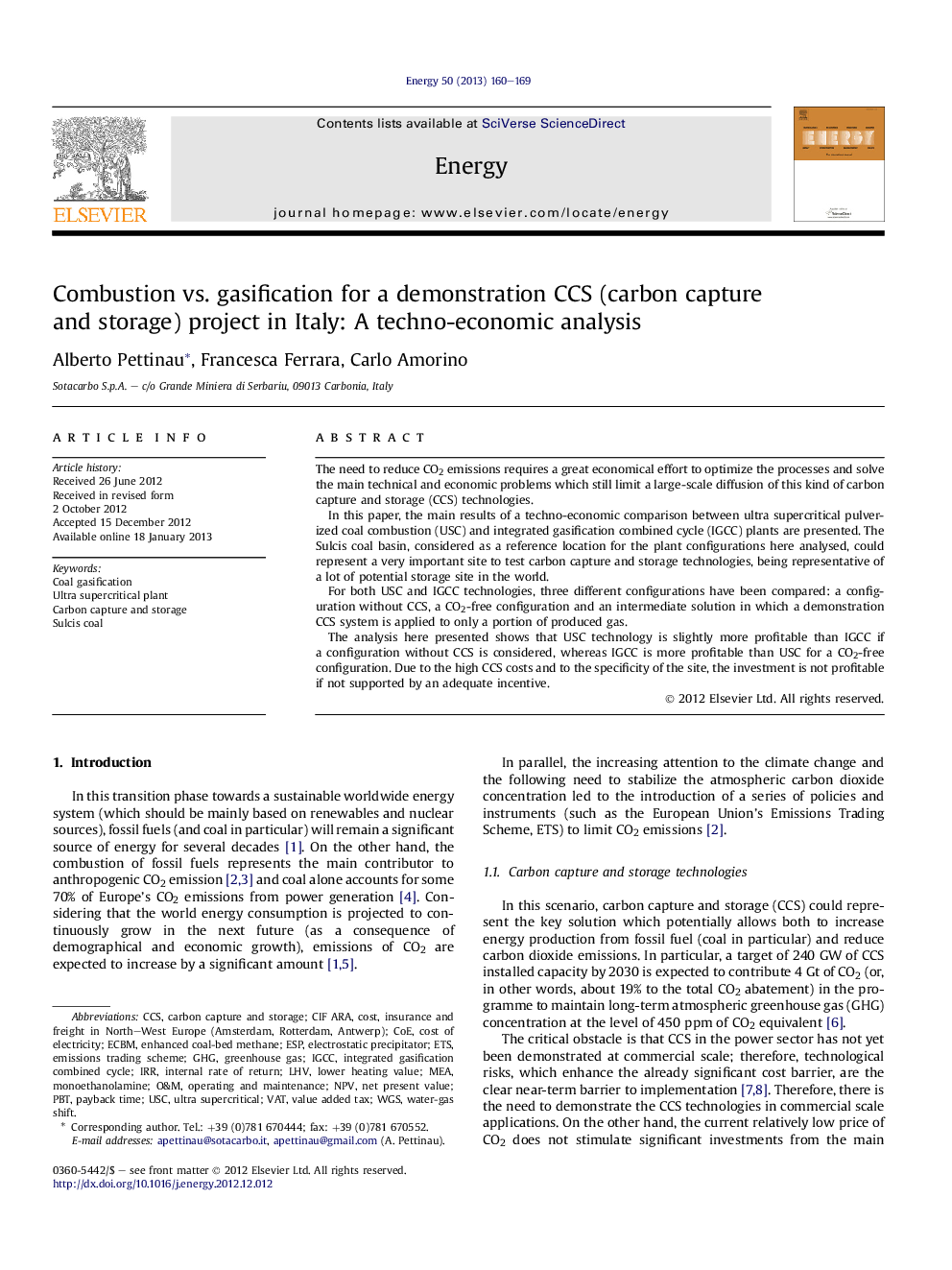| کد مقاله | کد نشریه | سال انتشار | مقاله انگلیسی | نسخه تمام متن |
|---|---|---|---|---|
| 1733227 | 1521496 | 2013 | 10 صفحه PDF | دانلود رایگان |

The need to reduce CO2 emissions requires a great economical effort to optimize the processes and solve the main technical and economic problems which still limit a large-scale diffusion of this kind of carbon capture and storage (CCS) technologies.In this paper, the main results of a techno-economic comparison between ultra supercritical pulverized coal combustion (USC) and integrated gasification combined cycle (IGCC) plants are presented. The Sulcis coal basin, considered as a reference location for the plant configurations here analysed, could represent a very important site to test carbon capture and storage technologies, being representative of a lot of potential storage site in the world.For both USC and IGCC technologies, three different configurations have been compared: a configuration without CCS, a CO2-free configuration and an intermediate solution in which a demonstration CCS system is applied to only a portion of produced gas.The analysis here presented shows that USC technology is slightly more profitable than IGCC if a configuration without CCS is considered, whereas IGCC is more profitable than USC for a CO2-free configuration. Due to the high CCS costs and to the specificity of the site, the investment is not profitable if not supported by an adequate incentive.
► The economic performance of USC and IGCC are compared.
► Different plant configurations, with and without CCS, are analysed.
► S-W Sardinia is assumed as reference site for plant location.
► A “partial capture” option can represent the better solution to develop CCS technologies.
► A CO2-free plant can be profitable only with a significant financial support.
Journal: Energy - Volume 50, 1 February 2013, Pages 160–169